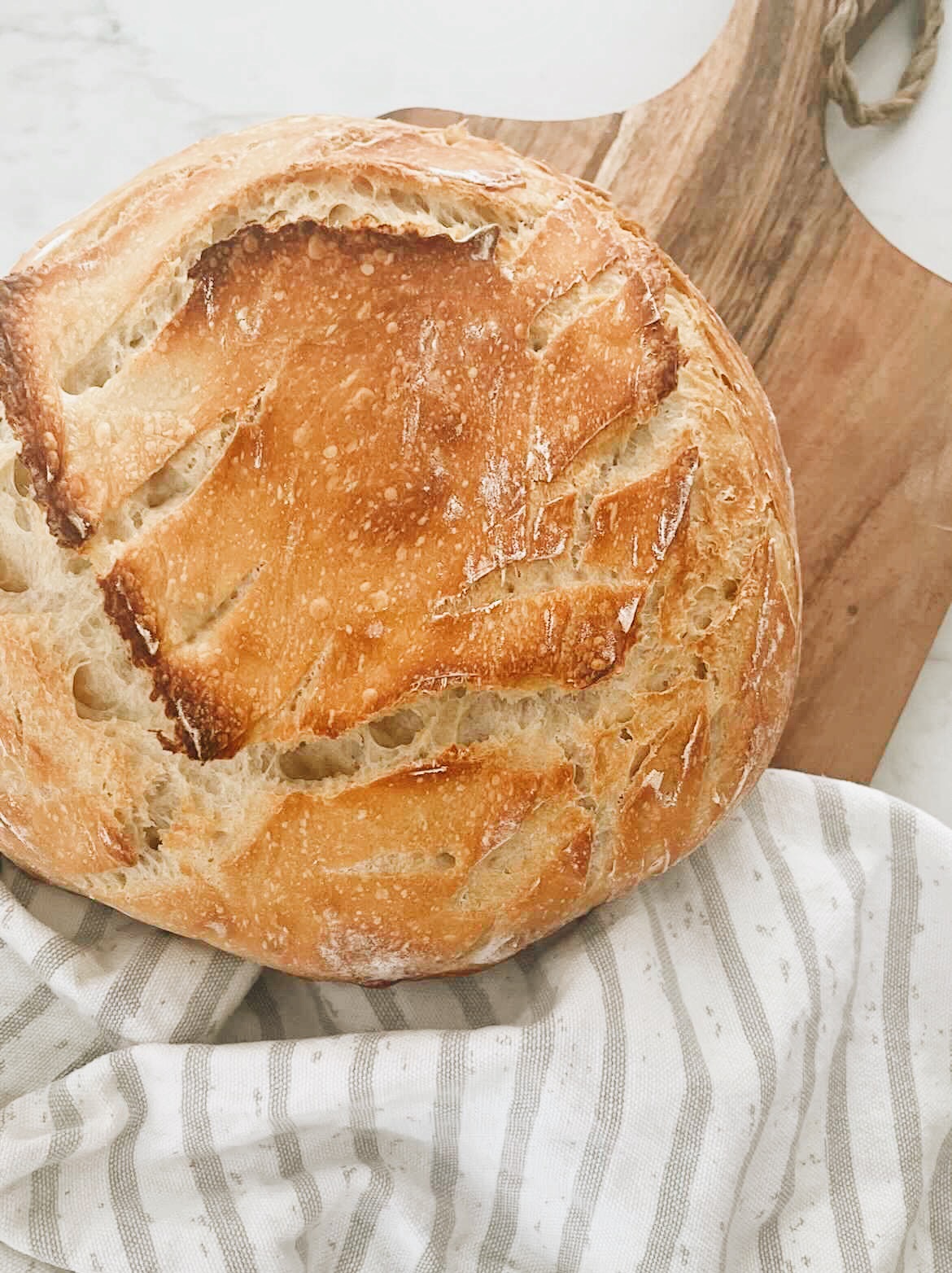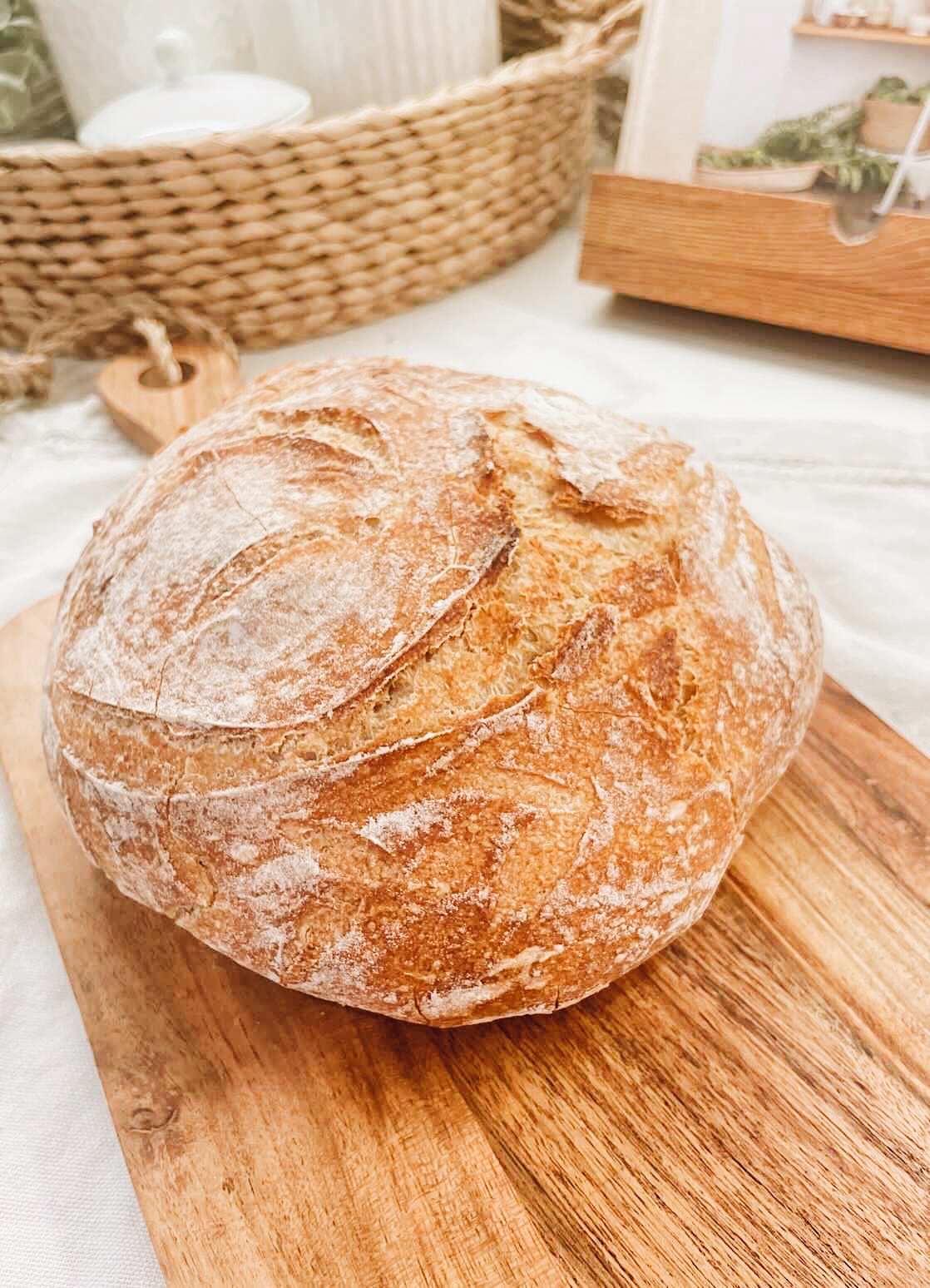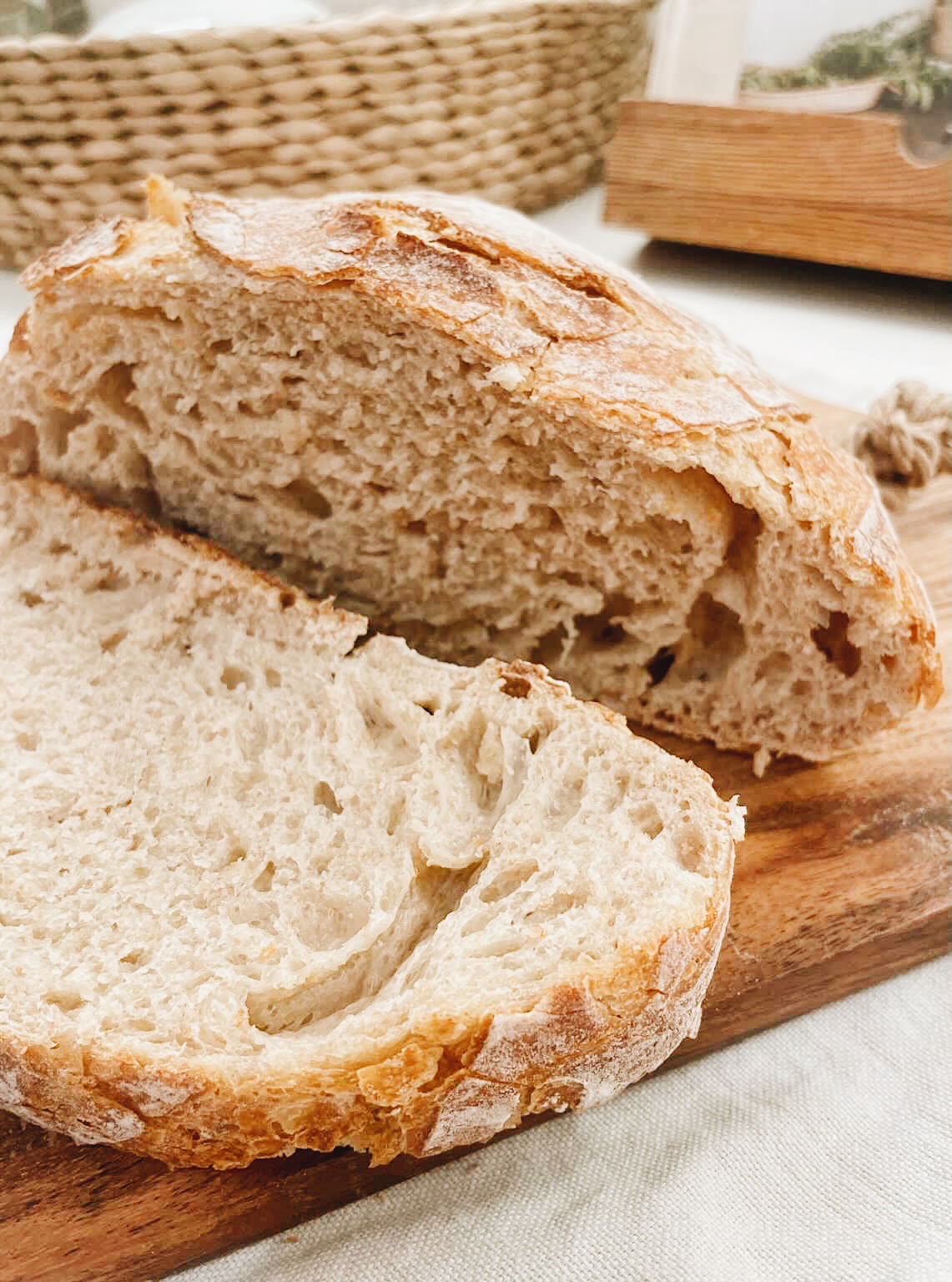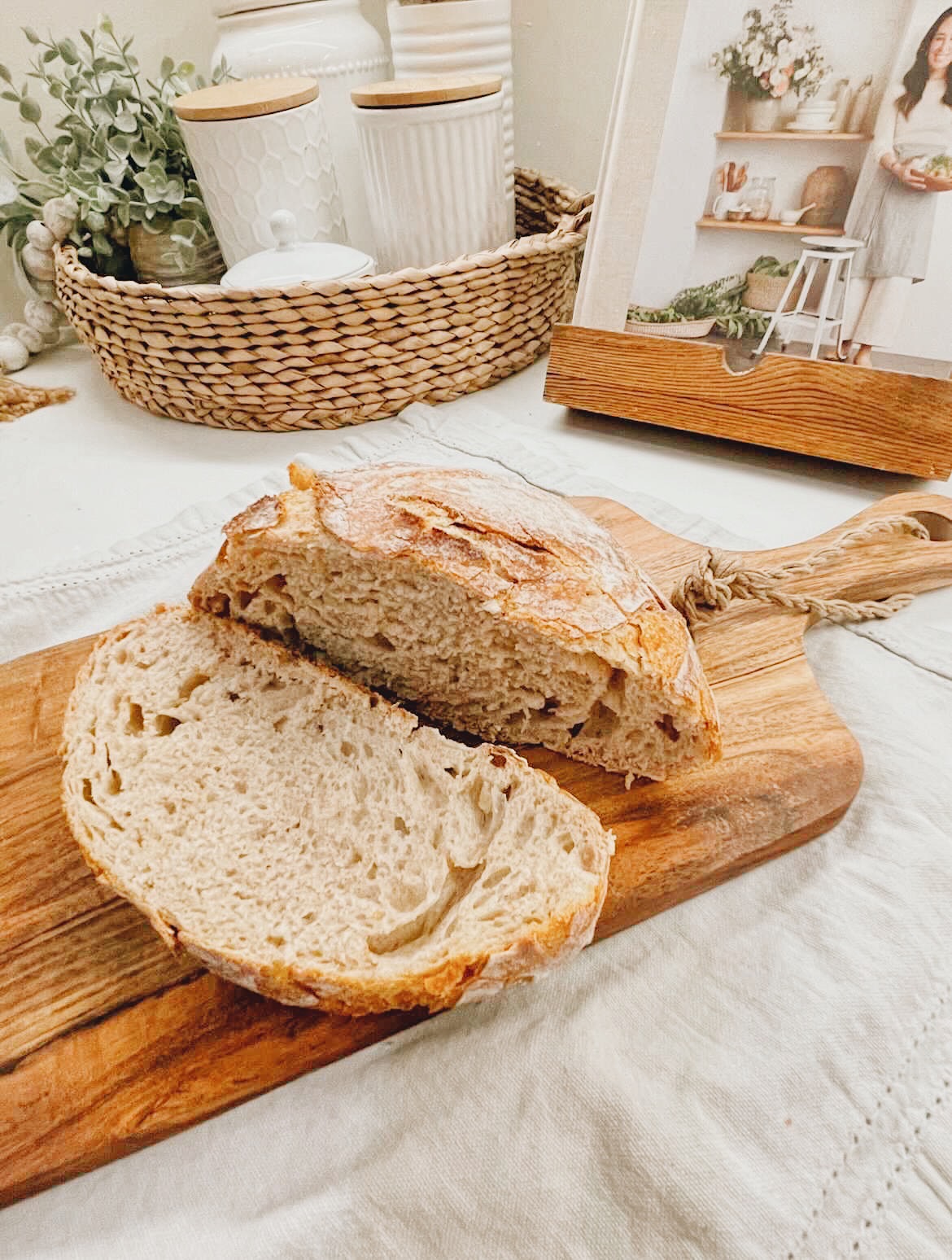
Sourdough Starter 101
Note from Dena… Hi, friends! Today’s guest post is on a topic that I am so excited to begin to explore, bread making. I have been wanting to learn to make my own bread forever. My favorite bread is sour dough, so when my sweet and talented friend, Jean, offered to bring us a guest post on how to make a sourdough starter, I was over the moon! Enjoy this post and when you’re finished, head on over to Jean’s blog and Instagram for more of her amazing and inspirational content, focused on slower, simpler and more intentional ways of living. All of the things nearest and dearest to my heart.

I am a big fan of sourdough! It brings me so much joy to bake bread and all kinds of recipes from scratch. It makes me feel so good to know that I am controlling the ingredients that go into the food I make for my family. Not only that, but I have a gluten sensitivity and so far I have found fermented sourdough much easier for my body to digest and doesn’t seem to cause the inflammation store bought breads cause. I am going to share with you how I made my sourdough starter, which flours work well, and the different ways to maintain and “feed’ your sourdough starter, once you have it established.
How to Make Your Very First Sourdough Starter
Day 1
Mix 1 cup flour and one cup of filtered water in a glass jar. (A wooden spoon works best, because metal can react to the yeast). Cover a glass jar with a cheesecloth or tea towel. Secure with a rubber band or twine. Set on the counter at room temperature for 24 hours.
Day 2
Remove half of the mixture from yesterday. Throw away (for now, but once your sourdough is established, you can save this for various recipes). Now add the same ratio of flour and filtered water as day one. Mix very well and cover with cheesecloth again. Mark your jar with masking tape or a rubber band. Place the marker at the top of the sourdough starter mixture. This is so you can see how much your starter grows.
Day 3 & 4
Remove the starter again, as you did yesterday. Add the same ratio of flour to filtered water. Mix thoroughly and mark the jar where the new mixture starts. Cover and rest on the counter for 24 hours. You may or may not see bubbles beginning to form.
Day 5 & 6
Starting today you will feed your starter 2x per day using the same ratio of flour and filtered water. (Approximately every 12 hours.) You will also want to continue removing half the mixture before feeding your starter. At this stage you may be seeing more bubbles and growth. Don’t worry if you do not. It will come.
Day 7-11
Somewhere between day 7 and 11 your sourdough will be mature. You will see more bubbles and your starter should be doubling in size. You may also begin to notice a sour or yeast-like scent. This is all normal and good! To test if your starter is mature and ready for baking you can do the float test. The float test is when you take a small spoon of starter and place it in warm water. The starter will float if it is ready.

Flour Recommendations
I highly recommend whatever flour you use, to make sure it’s organic flour. It’s healthier, tastier and better for you and the environment. You can do your own research on the benefits of organic flour if you would like and I encourage you to do so.
Below I have included the types of flours I have used and found to work great. I do think organic, all purpose, unbleached is probably the easiest to start out with.
All Purpose Unbleached
King Arther, Bob’s Red Mill, and Jovial US brands have a higher content of protein which is beneficial in making sourdough. Easy to work with and produces a nice fluffy bread.
Einkorn
Einkorn is the only wheat that has never been hybridized. It’s grown organically and tested for glyphosate. It is easier to digest for people with gluten sensitivity. It is higher in protein and lower in carbohydrates than modern wheat and richer in carotenoids, B vitamins, and essential and trace minerals than modern wheat. Its taste is described as a nutty flavor. It is not bleached or enriched. Jovial is the brand I recommend.
Gluten Free Flour
You can make a gluten free sourdough starter. I haven’t tried it, yet. However, I have heard of many people who have had success. You can find gluten free sourdough starter recipes on King Arthur’s website as well as on Bob’s Red Mill’s website. I have used gluten free flour as a substitute for regular flour in some sourdough recipes with a high success rate.
Whole Grain Wheat
Whole grain wheat will give you a nuttier, more robust and sour flavor. It contains more nutrients and has sourdough friendly microorganisms. Again, Jovial and King Arthur are great choices.


How to Maintain Your Sourdough Starter
You have the choice whether you want to store your sourdough starter in the refrigerator or room temperature on the counter. This will be determined by how often you will be using your starter.
In The Refrigerator
If you only plan on cooking or baking with your starter once a week or so, then you can keep it in the refrigerator. You will only need to feed it once a week. You can go longer in between. If you do go longer than a week between feedings, it will be okay, but you may need to give it a few extra daily feedings to allow it to become active again. When you are ready to feed your starter, take it out of the refrigerator and let it sit on the counter until it’s at room temperature. Then you will remove the discard (I usually remove about a cup or about half) and feed (one cup of flour and one cup of water). Allow it to sit out a while to start waking up again. You will see it bubbling and getting active. Storing your sourdough in the refrigerator causes the yeast to almost “go dormant” and not need as much “food.” That is why it will only need to be fed once a week.
On The Counter
If you use your starter daily or every other day, you may want to leave your starter out at room temperature. Ideally between 70 and 75 degrees. You will need to feed your starter daily if left out on the counter. It will need to be fed more often because the yeast will be more active in the warmer temperature.

Once you have your sourdough starter, there are so many resources and recipes online to experiment with. Start out with something easy like my sourdough banana bread which you can find here or my einkorn and spelt sourdough crackers.
The important thing to remember is to have fun! Don’t be too hard on yourself. If your first bread is a flop, don’t give up. Keep trying and experimenting. You’ll get there.

A little bit about Jean in her own words… My goal is to bring back a simpler way of life for myself and my family. In this space I want to share my experiences, my knowledge and hopefully inspiration. I have been embracing a slower, simpler and more intentional way of living over the years. Taking the time to immerse myself happily into homemaking, motherhood, handicrafts as well as connecting more deeply to my food and the Earth. Here at Jean Elle Home, I want to build a community that focuses on simple joys in everyday life. A community that aims to be more self-sufficient and less reliant on convenience culture. One that desires to grow, cook and preserve their own food. As well as learn to eat with the seasons and cook from scratch with high quality, clean food. A place to connect with others whose goal is to find alternate sustainable resources and build local communities. God gave us stewardship and dominion over the Earth and all of its creatures. What an honor that is. May we hold that honor in highest regard and dutifully fulfill that responsibility with gratitude, and joy.
Please visit Jean’s website here and give her a follow on Instagram here. I know that you will be just as inspired and in love with her as I am. Thank you for reading, friends! xo
